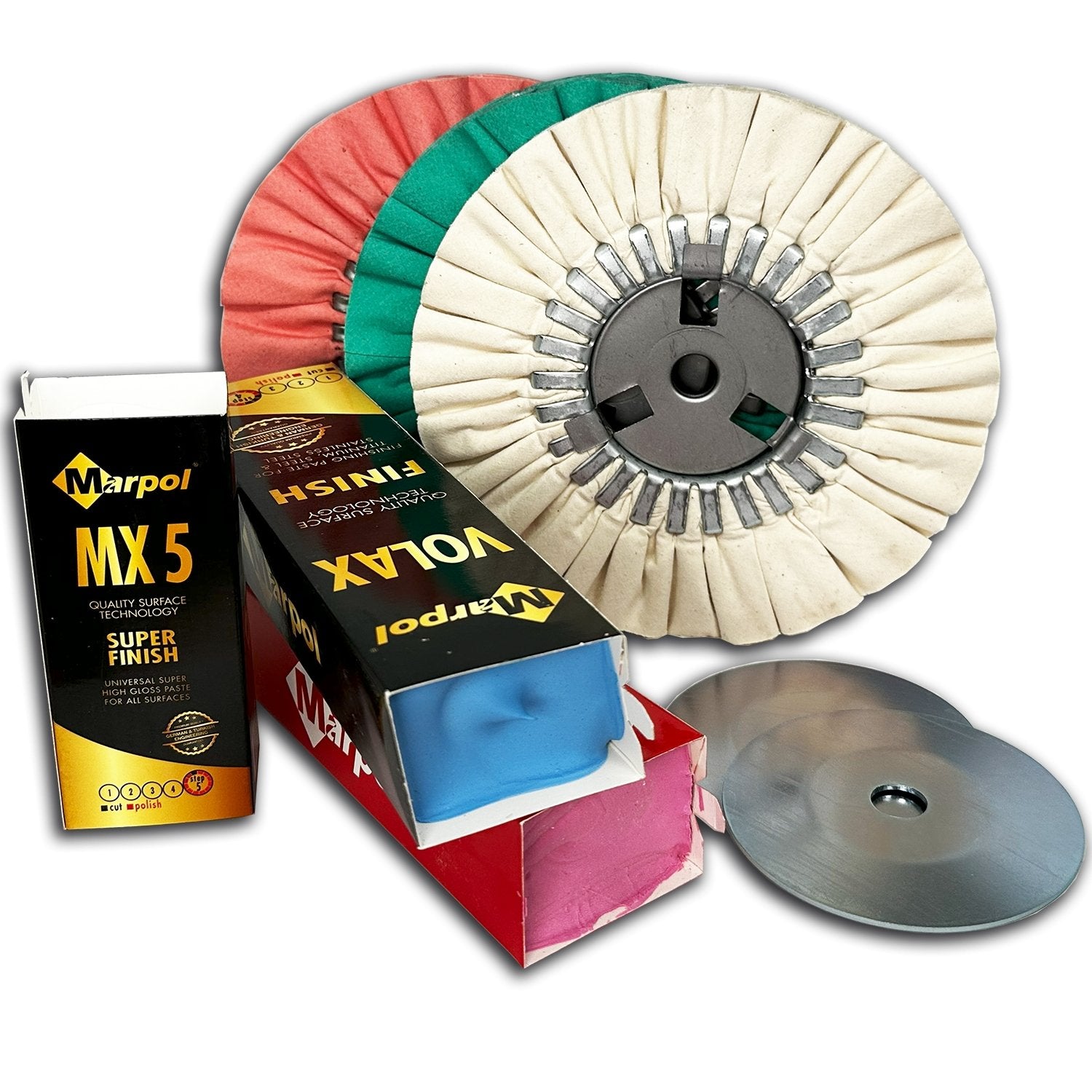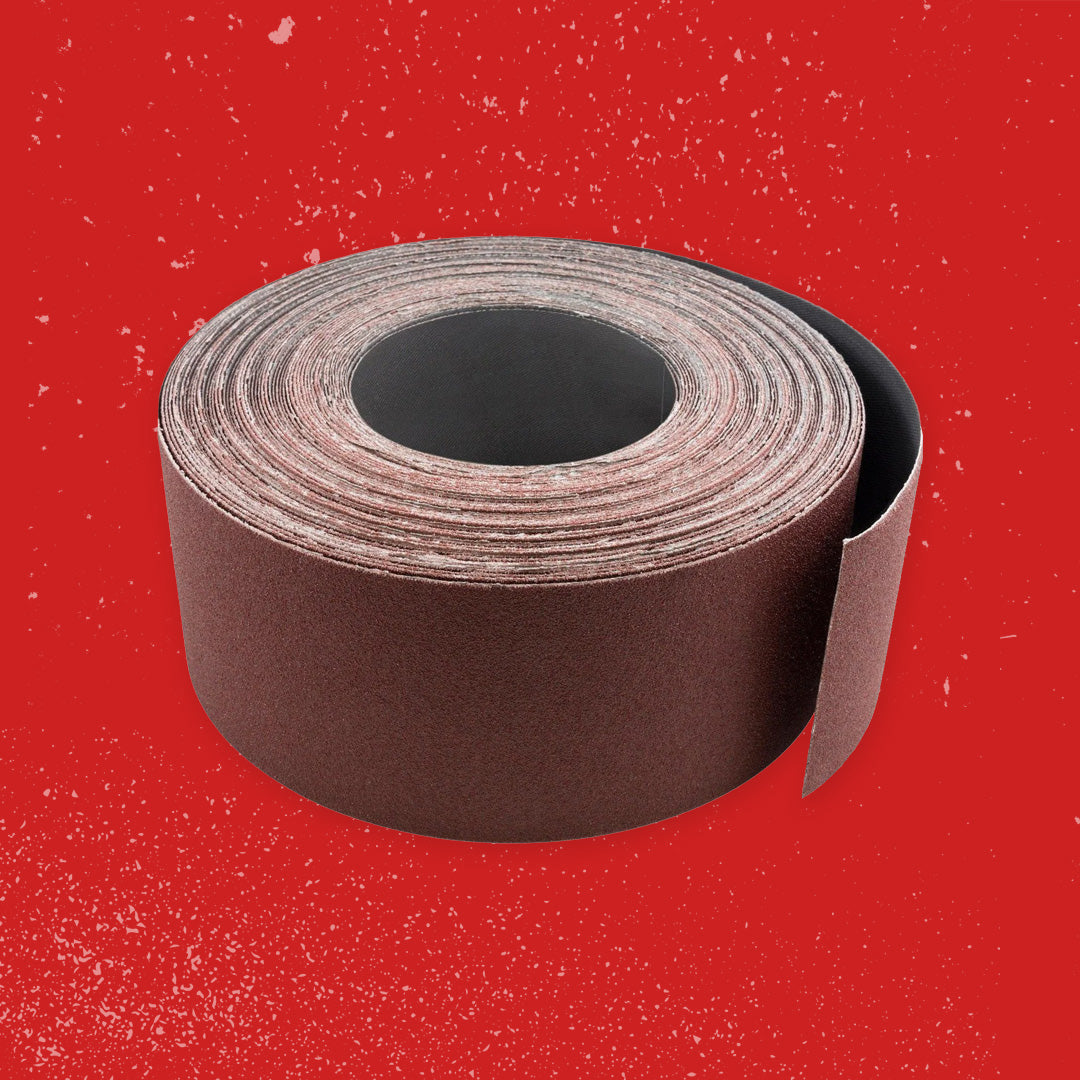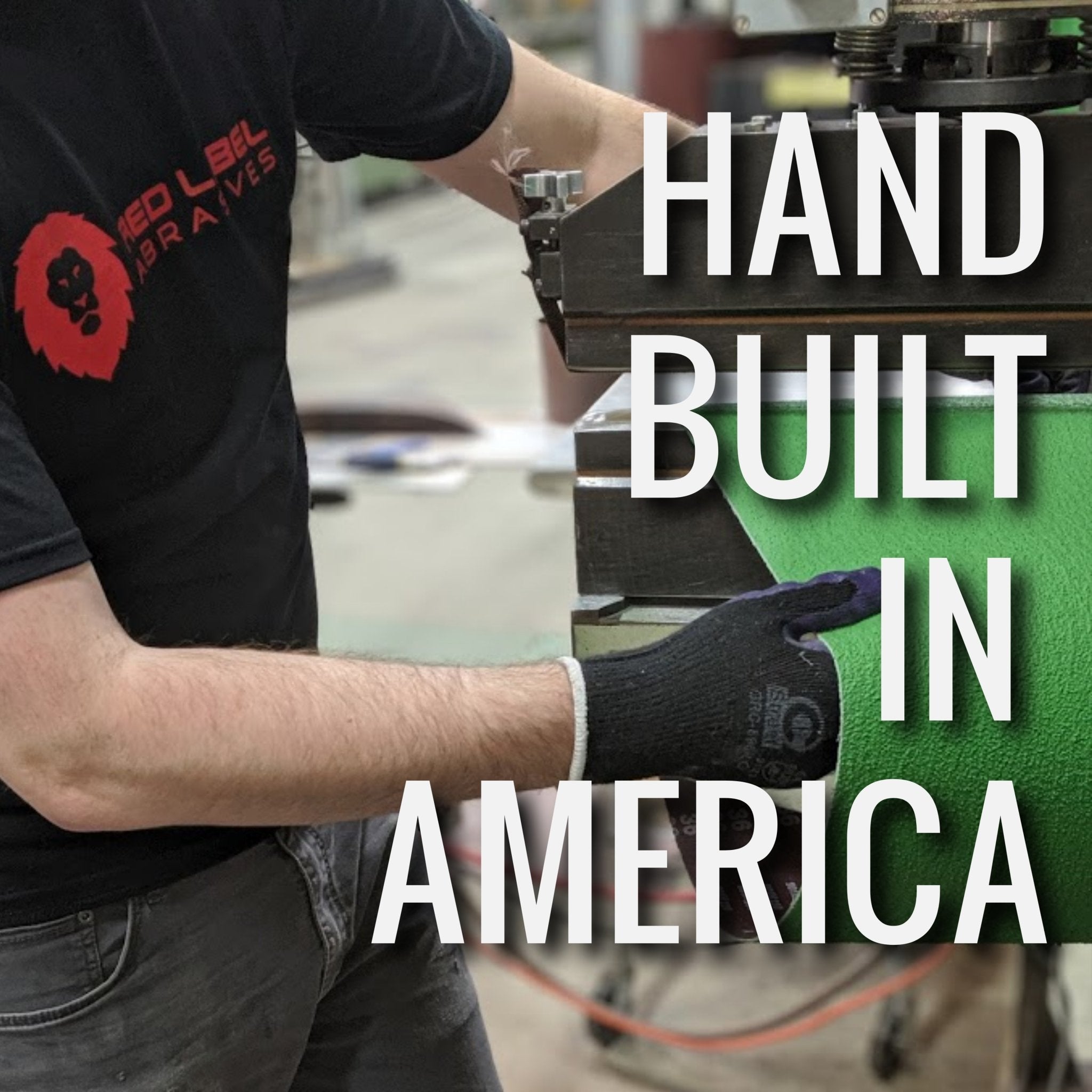Your Cart is Empty
Free Shipping over $150 (Excludes Oversized Products)
Free Shipping over $150 (Excludes Oversized Products)
Sanding Belts
Sanding Discs

How to Reduce Dust and Loading Static While Sanding
by David Kranker 4 min read

All sanding projects naturally generate dust. Using friction to remove material produces particles of removed material, which accumulate to create problems. It doesn’t matter whether you’re producing one-of-a-kind artisan furniture or stripping paint from used vehicles: you’re going to produce dust that can clog your abrasive and pose a health and safety risk to everyone in your shop.
Fortunately, there are steps you can take to mitigate the problems caused by dust. In this blog, we’ll go over ways that you can maximize the life of your abrasives, produce a higher-quality workpiece, and prevent dust from threatening the safety of your employees and your operation.
How Dust Affects Abrasive Quality
When an abrasive rubs against your work surface, it generates heat and static, which can cause the following problems with both the sanding belt and workpiece finish:
-
Softer materials, such as paint, lacquer, and resinous woods become sticky, clog the sandpaper, and cause sanding dust to stick to the abrasive surface.
-
Clogged sandpaper can’t produce a clean finish: the more the dust accumulates, the more likely you are to see patchy finishes and random scratch patterns on the workpiece surface.
-
You’ll have to change your sanding belt more frequently due to premature loading, which will increase your operating costs.
How Dust Impacts Shop Safety
When it comes to the work environment, dust creates more than an unsightly mess. It gets into clothes, can present a slip hazard on smooth floors, and can pass through machinery air vents to potentially damage delicate control systems. Breathing in dust can cause serious respiratory problems and can even create a fire or explosion hazard.
How To Reduce Dust Accumulation
Dust is unarguably a huge problem in industrial manufacturing, but there are solutions. It’s important to understand that some applications and materials will be more prone to loading static than others. Preparing to sand a resinous wood like pine calls for a different approach than stripping lacquer from old furniture. Once you anticipate the challenges of each operation, you can take additional preventative measures like the following:
-
Use the right abrasive coating:Some applications call for an open or semi-open coating on the abrasive while others are best serviced with a closed coating. With open coat abrasives, the grains cover approximately 50 to 70% of the surface, leaving open spaces for airflow and minimizing static load. Open coat abrasives are a recommended solution for soft or resinous materials. Semi-open coatings have a grit reduction of around 30% while closed coatings have 90-95% coverage, making them most appropriate for finishing and polishing jobs.
-
Use an appropriate grit sequence:Grits are meant to be applied in a certain sequence. If you use an ultra-fine grit for stock removal, it can create excess pressure and lead to premature loading and other problems. When you follow the correct sequence, each successive grit application will remove the proper amount of material, so the abrasive will last longer and less heat will be generated.
-
Use stearate-coated or antistatic sandpaper: Stearate abrasives are designed to be anti-clogging. Stearate is a chemical coating that provides a lubricating barrier between the abrasive and the workpiece, allowing for the generation of less heat and static while sanding. You can also use antistatic sanding belts made from paper specially-designed to reduce static and prevent debris from sticking to the sandpaper.
-
Clean away clogs after each use:If the grain is not nearing the end of its working life, you can use a rubber cleaning bar or soft-bristle brush to clear away any clogs and accumulated debris. If the abrasive has a paper backing, be careful to avoid tearing it.
-
Use a dust collection system:Most belt sanders have a dust management system built in, but if you use an orbital sander or sandpaper, the debri is often more difficult to manage. Try to source an orbital sander with a vacuum connection and clean your work surface every time you do any sanding by hand. If your operation produces large quantities of dust, a dedicated shop dust collector can improve indoor air quality and prevent hazardous accumulation.
Dust build-up and loading static are common challenges that can have a detrimental effect on health, safety, and workpiece quality. They can also cause your abrasives to wear prematurely, which increases your operating costs. By selecting the right abrasive, using it in the appropriate sequence, and following other best practices covered in this blog, you can reduce dust accumulation and the problems that it causes.
About Red Label Abrasives
At Red Label Abrasives, we sell sanding belts,sanding discs, sandpaper rolls, andsanding sheets and pads made from a wide range of grit types and coatings. From rougher grits for stock removal to micro-fine grains that yield a flawless finish without overheating, we have what you need to excel with your projects.
Red Label has been supplying some of the largest manufacturers around the globe with premium-quality, custom-manufactured abrasives for over 35 years. We take great pride in offering an unrivaled level of customer service and technical support. If you have questions or need assistance in selecting the right product for your application, please contact us today by calling 844-824-1956 or filling out acontact form.
ABOUT THE AUTHOR
David Kranker is a writer and creative maker who has been covering the abrasive industry on the Red Label Abrasives Blog since 2020. David spends his time continually researching sanding techniques to provide readers with the latest and greatest information. In his free time, David utilizes abrasives for many different home and auto projects at his home in Delton, MI.
Our Most Popular Abrasives

EdgeCore Ceramic Sanding Belts

EdgeCore Ceramic Flap Discs

Buffing Kit
Shop By Product Category





Why Choose Red Label?







